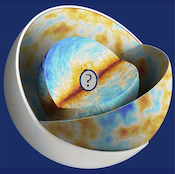Orateur
Description
The Planck collaboration has extensively used the six Planck HFI frequency maps to detect the Sunyaev-Zel’dovich effect (SZ) with dedicated methods, for example by applying (i) component separation to construct a full-sky map of the y parameter or (ii) matched multi-filters to detect galaxy clusters via their hot gas. Although powerful, these methods may still introduce biases in the detection of the sources or in the reconstruction of the SZ signal due to prior knowledge. The wide sky fraction and the large number of frequencies used in CMB observations make them a gold mine for applications of deep learning, especially to recover tiny signals such as SZ. I will present first results on such application to detect the SZ signal from the Planck HFI frequency maps. Trained on Planck clusters, we can recover them in a test area and in the full sky we detect more than 18 000 other potential SZ sources for which we have statistical indications of galaxy cluster signatures, by stacking at their positions at different wavelengths. We further perform a component separation on a simulated sky (WebSky) based on Convolutional Neural Network to try to break the known degeneracy between the infrared emission and the SZ effect. Deep learning applications shown in these proof-of-concept studies are promising for the detections of galaxy clusters and the characterisation of large-scale structures via their hot gas in future CMB experiments such as Simons Observatory.

